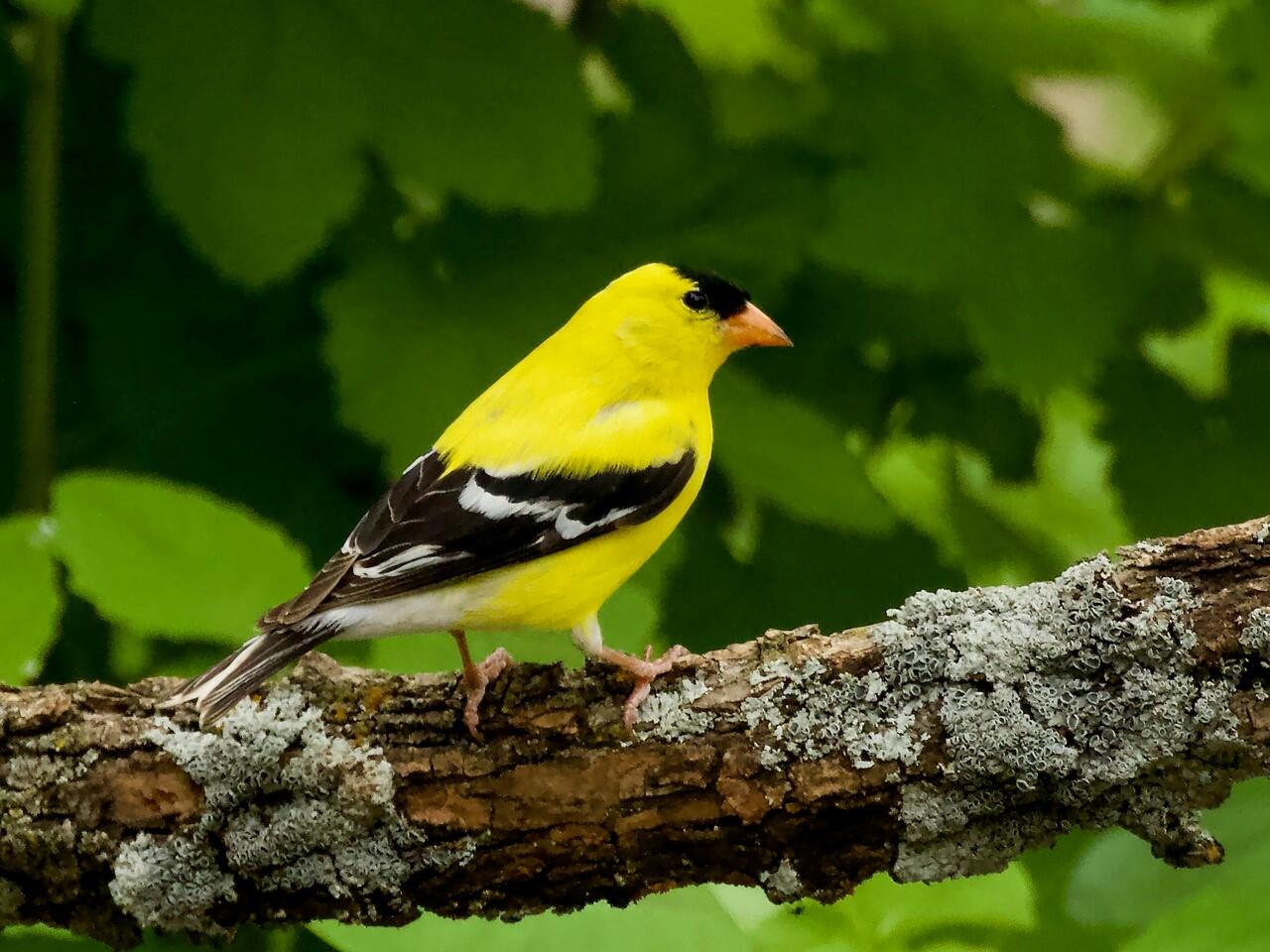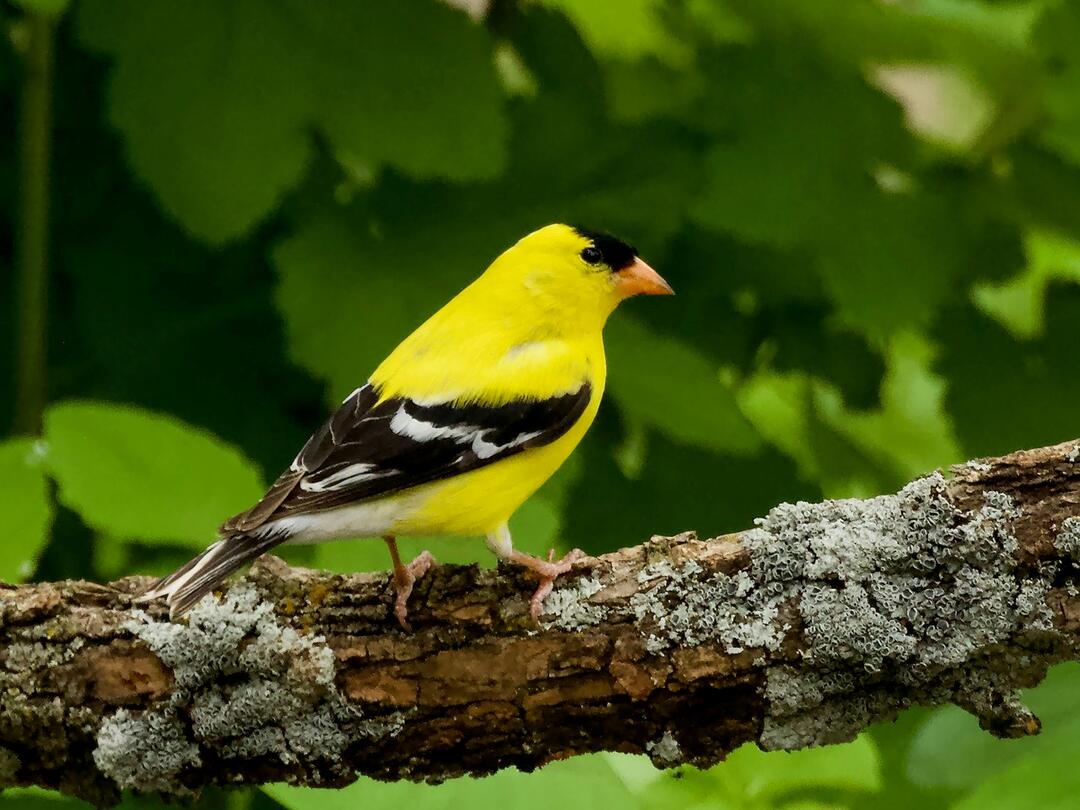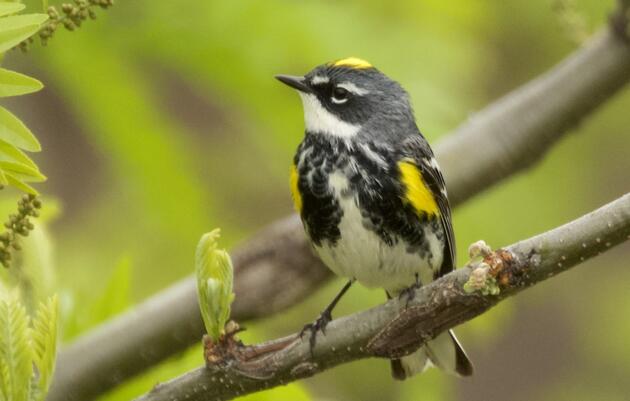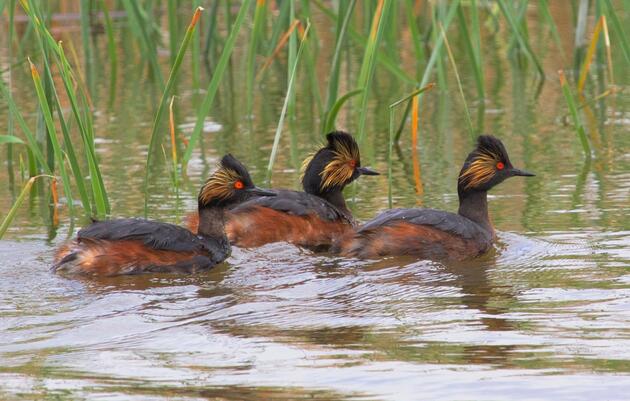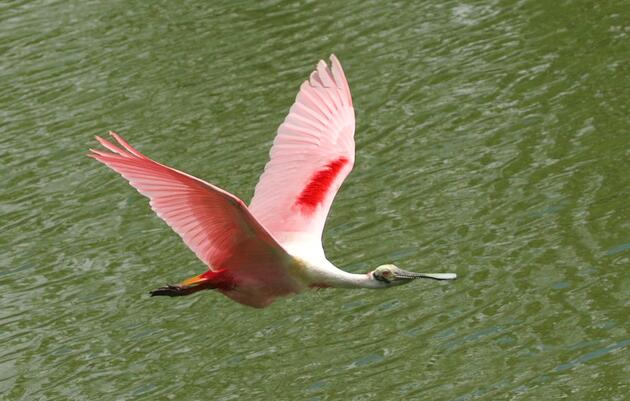By Tom Taylor, Resident Birder, Santa Fe, NM.
For more than a month this column has taken you on a cyber-tour around the country during the spring songbird migration. This is the seventh column during the COVID-19 pandemic confinement. The reader can link to other articles in the series using the references at the bottom of this page. The tour began in the southwestern part of the US, where the author resides in Santa Fe, NM. For more than ten years each spring he has taken at least one photographic outing to another part of the country to follow the arrival of the neo-tropical migrants from Central and South America.
In the previous column the cyber-tour had crossed Kansas and moved through Joplin, MO with a final stop at the Cuivre River State Park north of St. Louis. The trip will continue north from there into eastern Iowa, where the author was born and raised a Hawkeye, the state moniker for a native Iowan. Having lived his whole birding life in New Mexico, he might be considered an adopted “birding son” of the state, who adds a southwestern perspective to the wonderful variety of birds found in this part of the Midwest. Most of our stay in Iowa will concentrate on the multitude of summering songbirds. But first, the tour must include the American Goldfinch, which is the Iowa state bird and a year-round resident – the males showing their brilliant yellow plumage during the summer.
If one drives due north of St. Louis, the Iowa border with Missouri is along the Des Moines River, which empties into the nearby Mississippi River. To continue in the first person, the birding area that I will focus on in the first part of this column is west along the Iowa state border and parallel the Des Moines River, where the rural secondary roads can be taken that pass near the Shimek State Forest before reaching Lacey-Keosauqua State Park. (The park is named after Republican Congressional Representative John Lacey, who in 1900 was the author of the first federal conservation law. It set a precedent for other legislation including the Migratory Bird Treaty Act of 1918). This whole traverse is a combination of forest, fields, and river bottomland, i.e. perfect habitat for a wide variety of wildlife and especially migrating songbirds. The southeast Des Moines River region is credited by the Iowa Ornithologist’s Union with over 30 species of wood warblers. We will get to a few of those plus other songbirds during our stay in Iowa.
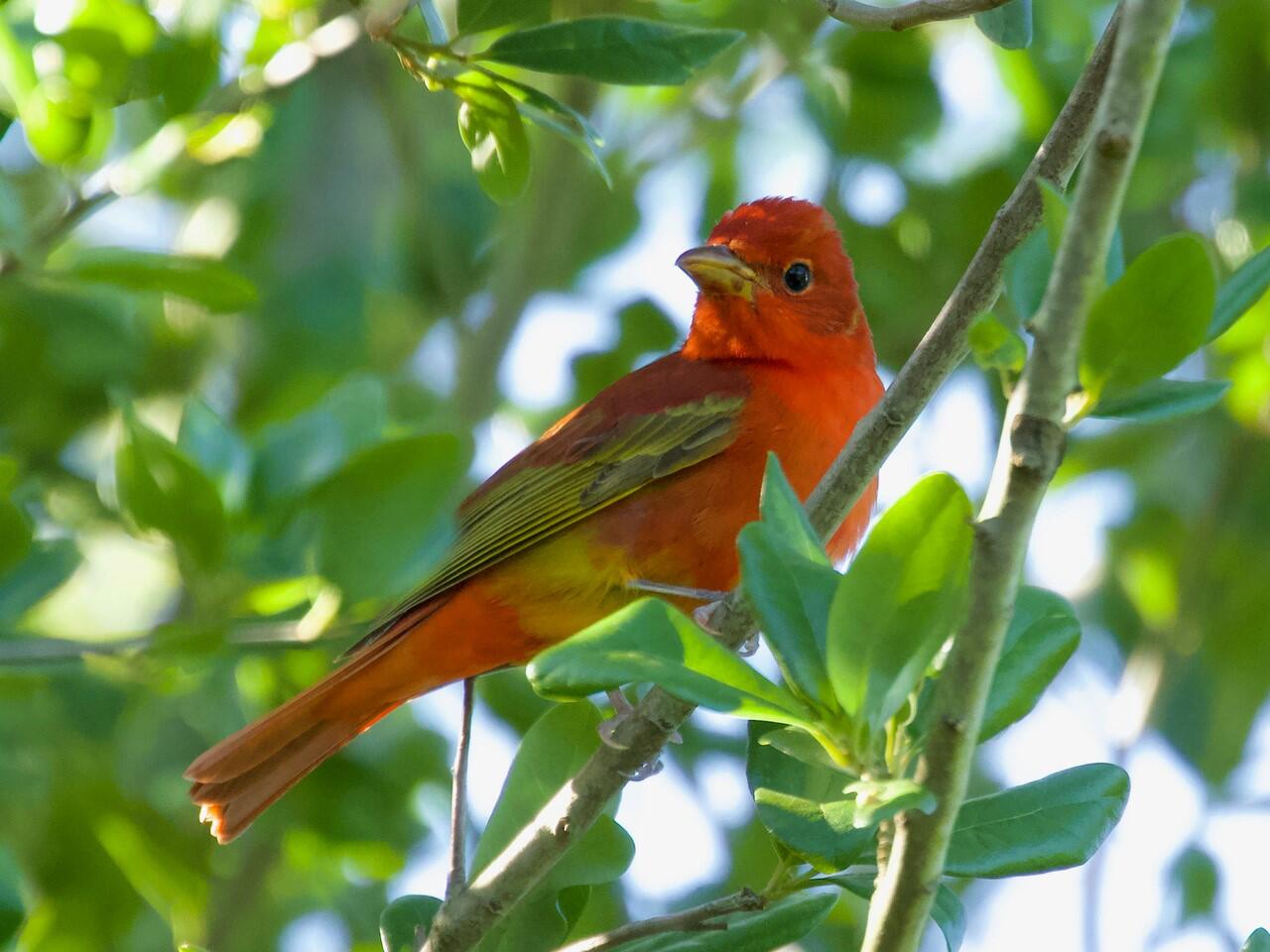
Most of the following photos are some of the better images taken from other locations across the country in order to more clearly portray the birdlife seen in these Iowa forests. Needless to say, these forests offer many viewing opportunities, but also extreme photographic challenges. While visiting the southeast border during my early days of birding in Iowa, I was stunned to find a male Summer Tanager in the campground area at the park. Although I have seen many of these tanagers on the Texas coast since then, I clearly remember this deep-red bird framed by the green forest. As a matter of interest, I have selected an immature Summer Tanager for the photo. This bird has yet to fully replace its yellow juvenile feathers with its mature red plumage – a transition I have oftentimes seen in the spring for first year male birds.
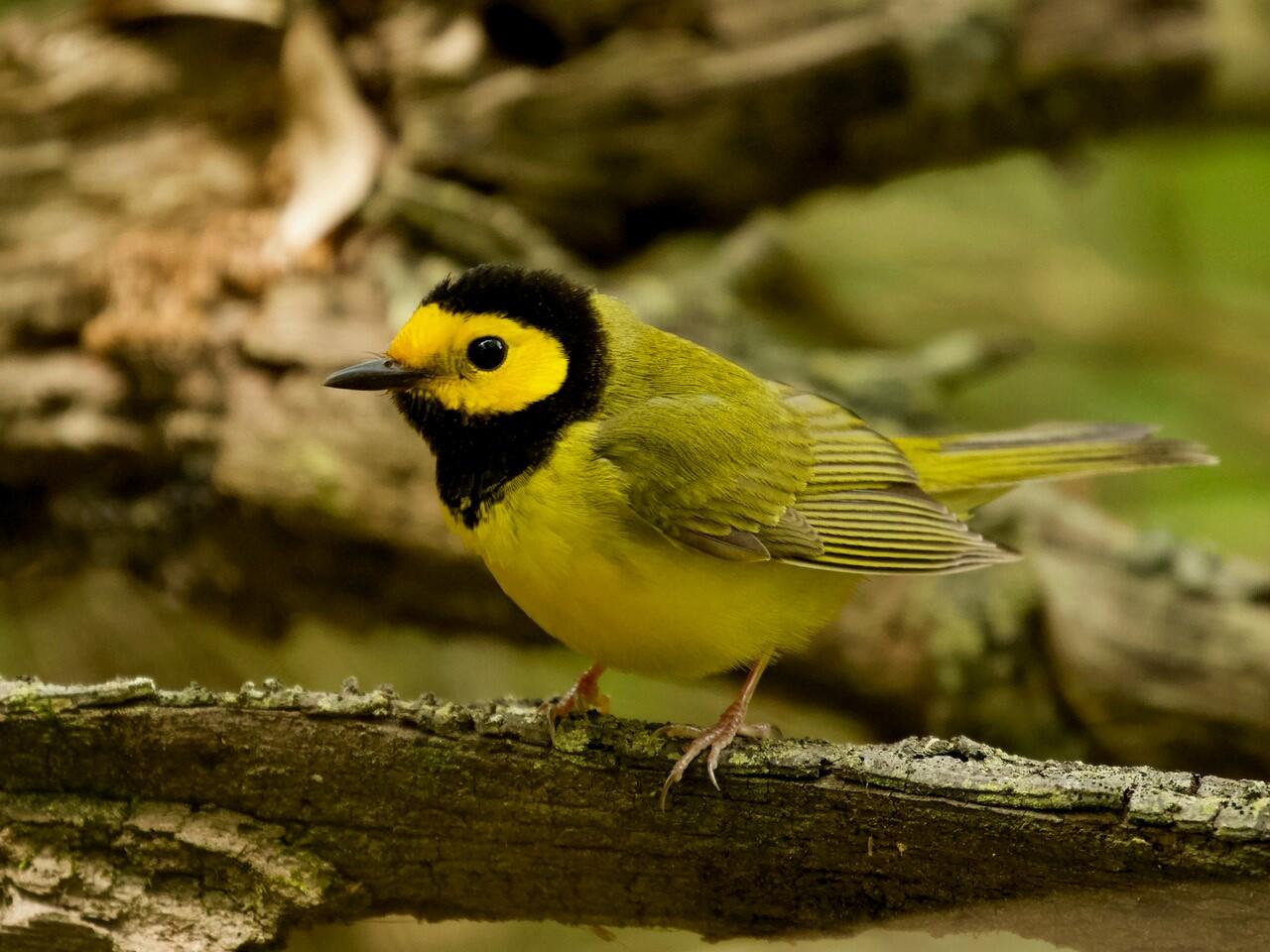
I mentioned Kentucky and Worm-eating Warblers as “skulkers” when we visited the north Texas coast in an earlier segment. They are both found in southeast Iowa, as well as a third secretive species, the Hooded Warbler. The photo is from the Texas coast, where after its flight across the gulf, it set up for a full view. One is fortunate to just get a good look at this thicket-loving understory species. Having gotten into the thicket, so to speak, one can regularly hear the songs of two similarly reclusive birds, the Wood Thrush and Ovenbird.
The Wood Thrush projects a loud, flutelike musical song that carries easily through the forest while the Ovenbird has a very loud “teacher-teacher-teacher” phrase that rebounds through the canopy – a volume well out of proportion to its size. Both birds forage on the forest floor, but the thrush can be found singing higher in the trees. (The reader can click on the speaker link found inside the bird icons to the left of this article to hear the songs.)
The photo of the Ovenbird is one of the few times that I have seen it perched in the open – that happening one morning in the Michigan Upper Peninsula. Both the Wood Thrush and Ovenbird migrate north from their wintering grounds in Central America.
The other extreme to these lower-canopy species leads one to get the well-known malady of “warbler’s neck” from searching high in the trees. Along this line of thought, let me mention a pair of Iowa songbirds that share a similar dominant field mark. These are the Yellow-throated Warbler and Yellow-throated Vireo that are both foliage gleaners and spend a considerable amount of time high overhead. Yellow-throated Warblers are not commonly found, but have an affinity for sycamore trees. There is a group of these trees in Lacey-Keosauqua at Ely Ford on the Des Moines River where you have a good chance of finding them. Being warblers, they are constantly active as they forage for small insects. The Yellow-throated Vireo has a less active pace. It has a chunkier appearance and can typically be seen perched on overhead branches, where it periodically sings a somewhat burry song. Yellow spectacles nicely complement its decorative yellow throat and make it the most colorful of the North American vireos. Both these species winter in Central America
The main destination as the tour heads north in eastern Iowa is Cedar Rapids, my boyhood home and where I still have a number of friends. Just before reaching town, some 100 miles north of Lacey-Keosauqua, there is a very panoramic state park, Palisades-Kepler, on the Cedar River. The bluffs along the river are a dramatic background to the ever-changing array of songbirds found there in the spring. The trees along the river, and next to the main park area, are open to conveniently go birding. As was the case for the extreme southeast portion of the state, there are a large number of choices of spring songbirds to feature. The next three photos of birds found at Palisades-Kepler were selected, not just from a pure birding criterion, but because of the striking range of colors that they represent.
The American Redstart is a very commonly seen neo-tropic songbird in Iowa. The male, seen in the photo, constantly flits through the forest habitat while spreading its tail to flash its dark orange-on-black plumage. This behavior has led to the Latin American name Candelita or “little torch.” Females and immature birds replace those colors with a yellow-on-gray pattern. The Blue-gray Gnatcatcher is always very difficult to photograph, due to its small size and constant activity. The gnatcatcher in the photo from Palisades-Kepler presented a close look with a special soft blend of colors while gleaning insects from budding catkins. (The bluish cast was not amplified in post-processing).
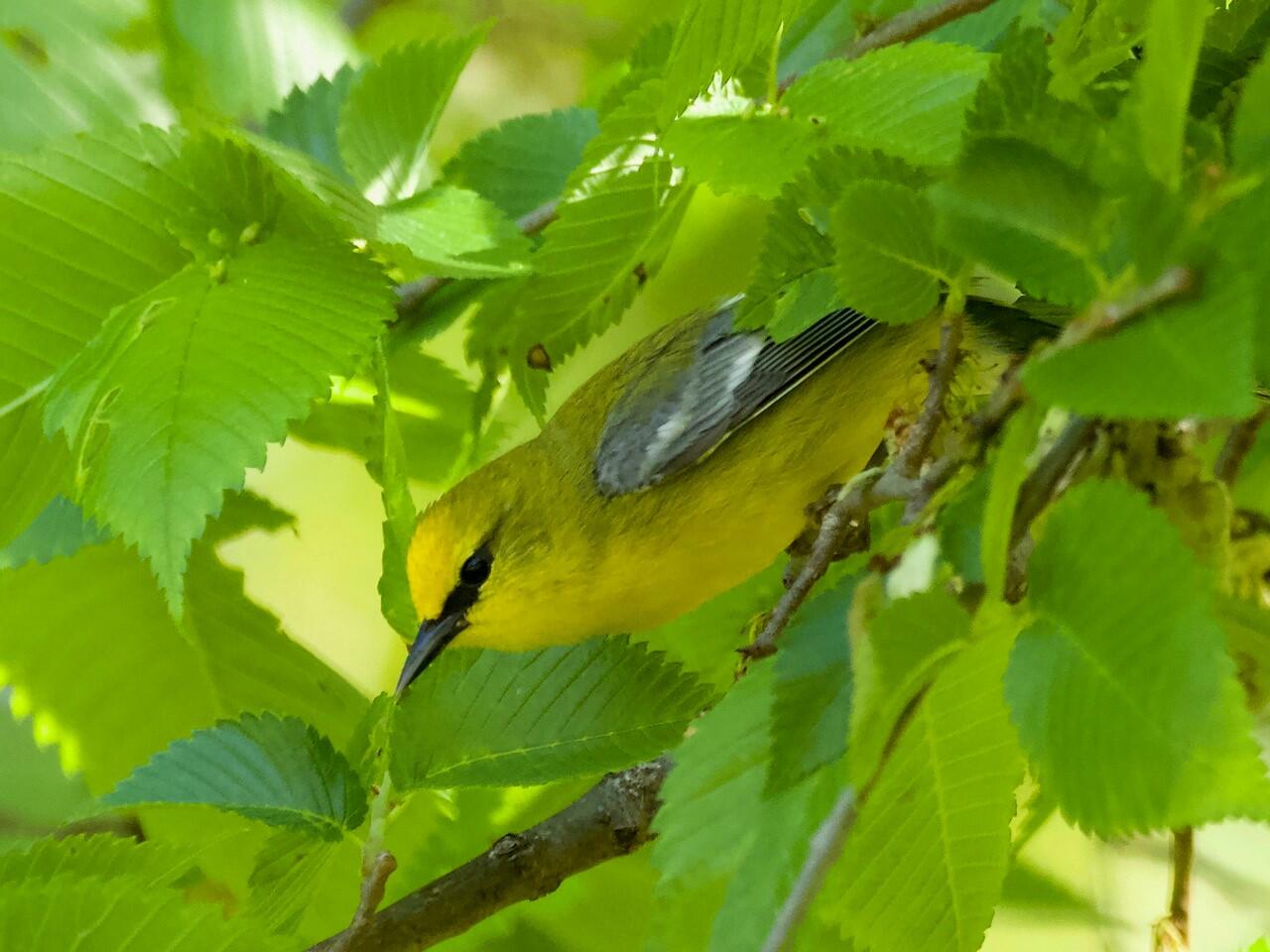
The Blue-winged Warbler has a history as one of my nemeses for getting a high-quality photo. This warbler is a specialist of shrub country where land has been cleared of deep forest cover. Its song is an insect-like bee-buzzz that I can easily hear, but never seem to be able to pin down its location. My search ended on a beautiful spring day at Palisades-Kepler, where I found a Blue-winged Warbler that was eating invertebrates from easily accessible branches. Patience occasionally led to a quite close, though instantaneous look. (A fast shutter speed was essential). The bird was regularly devouring small worms and, given all the time it spent in the tree, must have been close to its cargo limit.
As you can see, there are limitless possibilities for viewing neo-tropical songbirds in Iowa. The cyber-tour plans to visit a number of other locations. But the most productive birding, and quality photography, is always found where there is a controlled environment for food and water – much like was the case along the north Texas coast. The highlight of any trip to my boyhood home in Cedar Rapids is the time that I spend at my birding friends’ home. They have created a “bird-magnet” yard that allows multiple hours of songbird photography – giving images like that of the Nashville Warblers shown basking the yard’s slowly moving stream. Stay tuned for the next column when we visit there.

